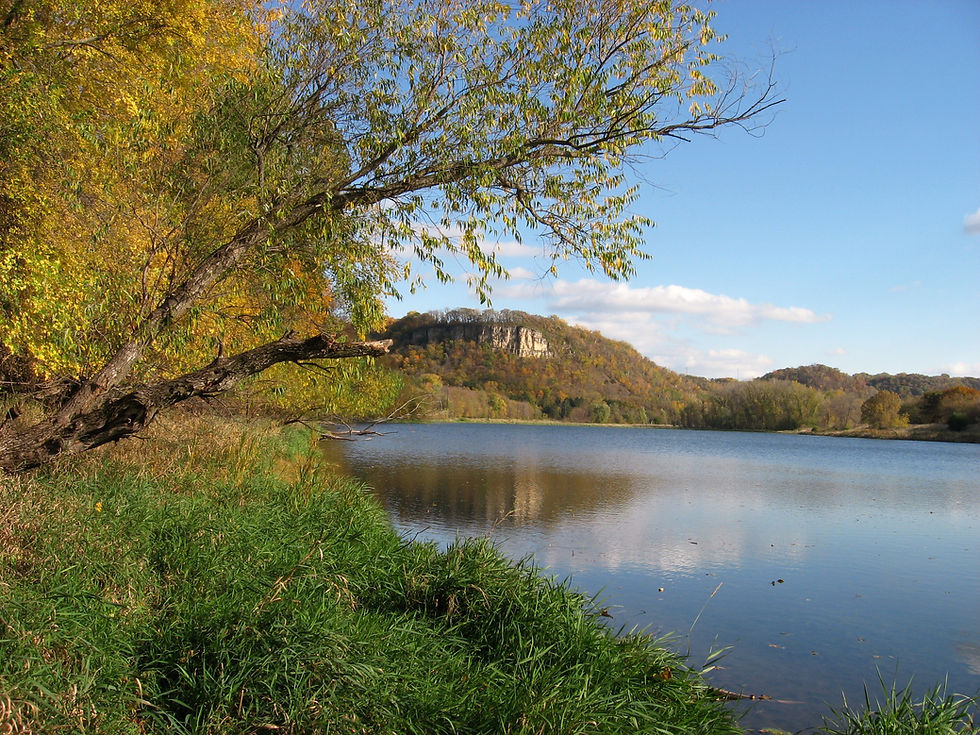Wacouta Fall Spectacles
- wacoutanaturenotes
- Oct 11, 2020
- 3 min read

Dead Trees Along Wacouta Bay
With the west coast experiencing mega-wildfires and the gulf coast being repeatedly impacted by hurricanes, southeast Minnesota has been fortunate to experience a wonderful summer and early fall.
This situation has been exemplified by the Mississippi River acting more normal than in recent years. Given the fact four of the past five years river levels have been way above normal, this summer has been ideal.
In the September-October issue of Big River Magazine, Reggie Mcleod has written an article "Drowning Trees" describing the cumulative effect of extended periods of high water on our floodplain forests. This photo taken on September 18 shows those effects along Wacouta Bay.
It seems most species of trees are impacted, but ash the most severely. The floodplain forests in the Cannon River Bottoms on Red Wing Wildlife League property are also being heavily impacted by these extended highwater levels.

Sunrise on Point No Point
With all the forest wildfires in the western United States, we have been able to observe some amazing red/orange sunrises and sunsets the last couple weeks of September. This photo taken overlooking Lake Pepin was taken on September 23 from Green's Point.

Cedar Waxwings Feeding on Mountain Ash Berries
We have had a couple mountain ash trees close to our house and bird feeders for several years. Every year they produce an abundant quantity of bright orange berries. We have noticed that the birds are capable of detecting exactly when those berries ripen and will swarm the tree.
On September 26th, several species arrived to capitalize on this exceptional food source. Birds partaking in the feast included cedar waxwings, catbirds, purple finches and robins.

Robins Eating Berries
These berries are quite bitter and high in tannin, which make them not very edible for humans fresh off the tree. However birds love them and serve as a great cold season food source.
In areas where these trees are plentiful, the berries hang on well into the winter. In the case of our tree, they were consumed in a couple days.

Black Squirrel
In recent weeks, I have observed a black squirrel in the area around the Wacouta Town Hall. The black coloration in the eastern gray squirrel is believed to be the result of a faulty pigment gene.
The frequency of the black morph gray squirrel was once much more common throughout their range.

Bluebirds
As I have mentioned in previous posts, this has been a very successful year for bluebird reproduction. Since the second brood fledged earlier this summer, we have observed and heard these birds almost every day. By mid- September, it was common to observe large flocks of juvenile bluebirds getting ready to migrate together. These migrations occur during the day and end in the southern United States and Mexico for the winter. On September 28, I observed a flock of 25 bluebirds sitting on power lines along Wacouta Road. Because of our warming winters, it is becoming much more common to observe some bluebirds stay here all winter.

Double Rainbow over Lakeview Avenue
Just after dinner on September 30, we were treated to a double rainbow over Lakeview Ave.

Double Rainbow over Wacouta Prairie
After quickly walking up the trail, I was able to take this photo at a slightly different angle to include the prairie and the bluff.

Wacouta Prairie from Rattlesnake Bluff
As we head into the fall season, the newly established Wacouta changes colors along with all the foliage of the bluffland trees.




Again, wonderful capture of the changing season. I love especially the Cedar Waxwing eating mountain ash photo!
Thanks Bruce